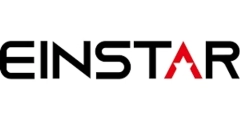- All
- Deals
- Coupons
- Sales
- Expired
I couldn’t find reliable information about a brand called “EINSTART”, but I did find info about EINSTAR / Einstar (sometimes stylized “EINSTAR” or “Einstar”) which is a line of 3D scanning / 3D technology products. It’s possible "EINSTART" was a typo or mis-hearing of “EINSTAR”. Here’s what I discovered about EINSTAR / Einstar and some things you should check.
What is EINSTAR / Einstar
-
EINSTAR is a brand of prosumer / entry-level 3D scanners by SHINING 3D, a company well known in the 3D scanning & digitizing / metrology / manufacturing technology space.
-
The goal of the EINSTAR series is to offer more affordable, user-friendly scanning for creators, hobbyists, small studios, educational users etc.
-
Their scanners claim features like accuracy up to 0.1 mm, scan speeds of up to 14 FPS, support for darker / shiny surfaces, RGB texture / color capture, user-friendly software and alignment, etc.
-
The EINSTAR series includes models such as EINSTAR, EINSTAR VEGA, EINSTAR 2, and others.
What Users Say (Pros & Limitations)
From user forums (like Reddit) and reviews:
Pros / What people like
-
Many mention the software is good / intuitive and the hardware gives solid performance when used well.
-
It’s seen as a good “jack of all trades” 3D scanner: not perfect for every extreme detail, but decent for medium objects and general scanning needs.
-
Some report good ability to scan hair / human forms with certain modes (“Hair Mode”) which is a feature in the hardware / software.
Limitations / Challenges
-
For very small features, holes, sharp interior corners — it struggles. Users say you may need additional scans from different angles, cleaning up in software, or use scanning spray to help.
-
Quality of detail in tiny or intricate parts may not be optimal out of the box compared to high-end metrology scanners.
-
Requires good scanning practices: stability, tracking markers, good lighting, careful overlapping scan paths etc. Execution matters a lot.
Verdict & Use Cases
So, if “EINSTART” was meant to be EINSTAR / Einstar, then here’s how I see it:
-
It’s a good choice if you want a relatively lower-cost, user-friendly 3D scanner for general use (hobby / small projects / prototyping).
-
It offers a balanced mix of hardware + software features that let you do “real 3D scanning” without being at the high-end industrial scanner price.
-
It’s not expected to match metrology-grade scanners for ultra fine precision (e.g. sub-0.01 mm in all conditions), but for many practical purposes (3D printing, digitizing sculptures, reverse engineering moderate parts) it will probably perform well.
-
Because performance depends heavily on technique, for best results you’ll need to take care with alignment, scanning angles, surface treatments etc.

